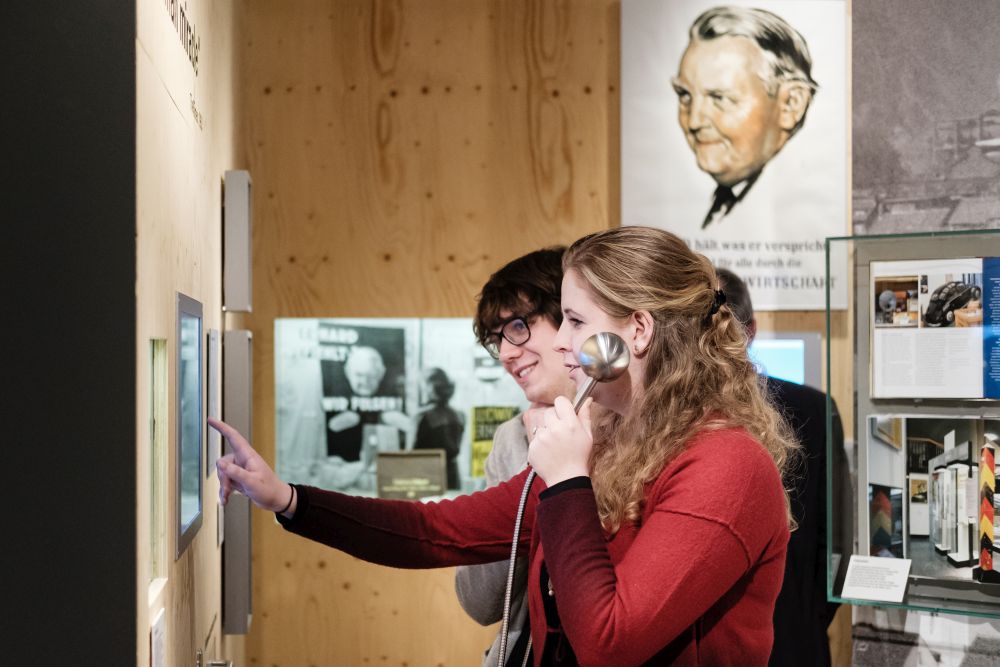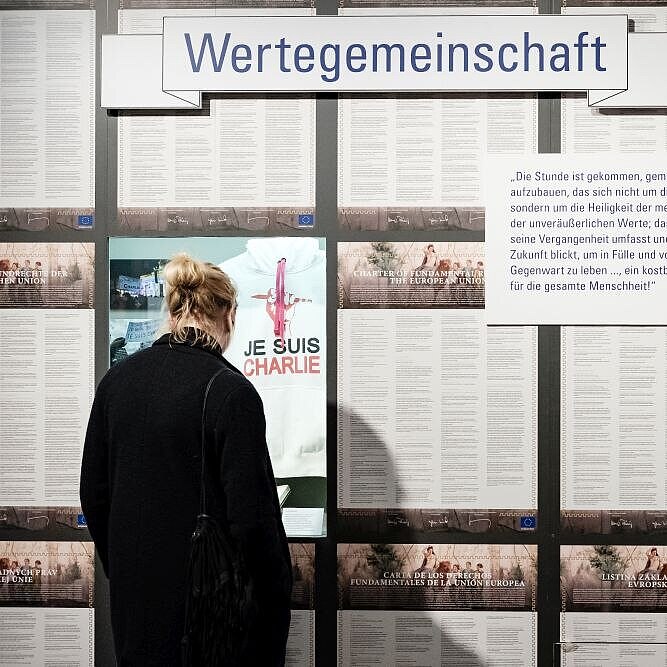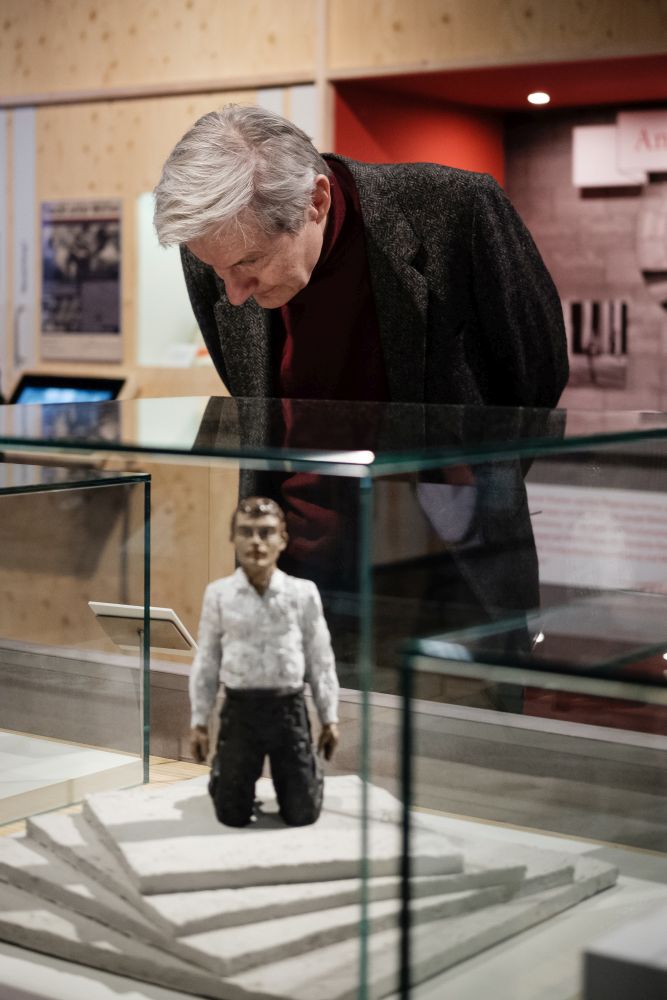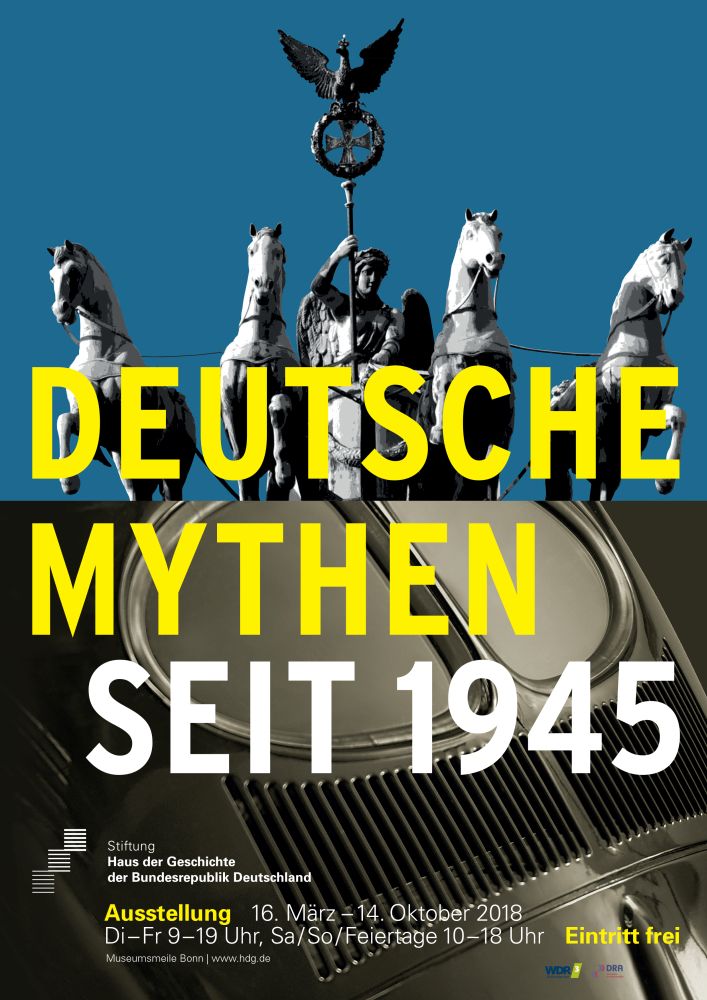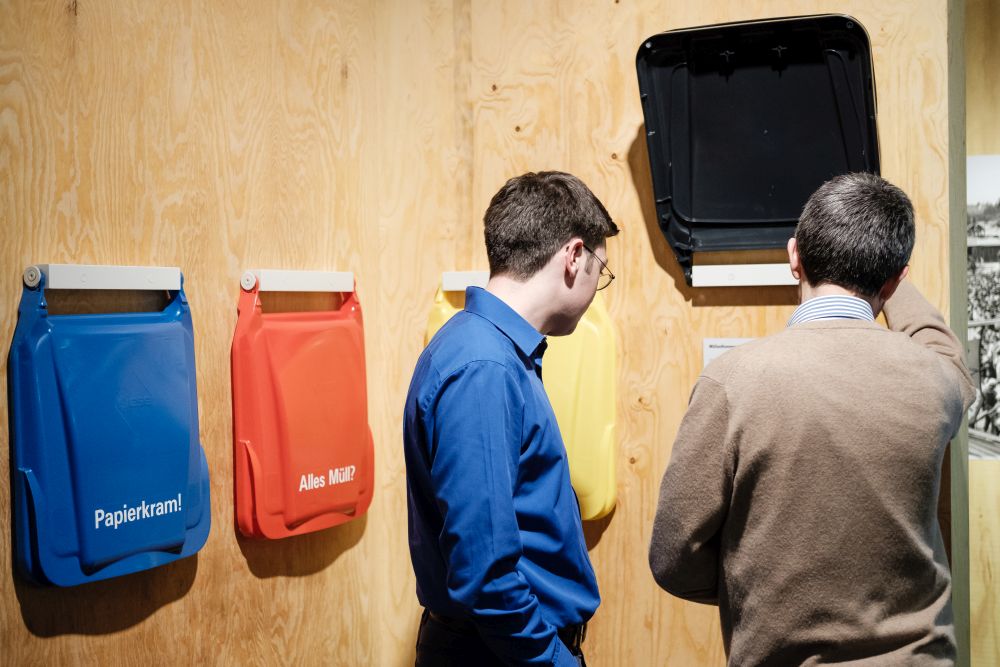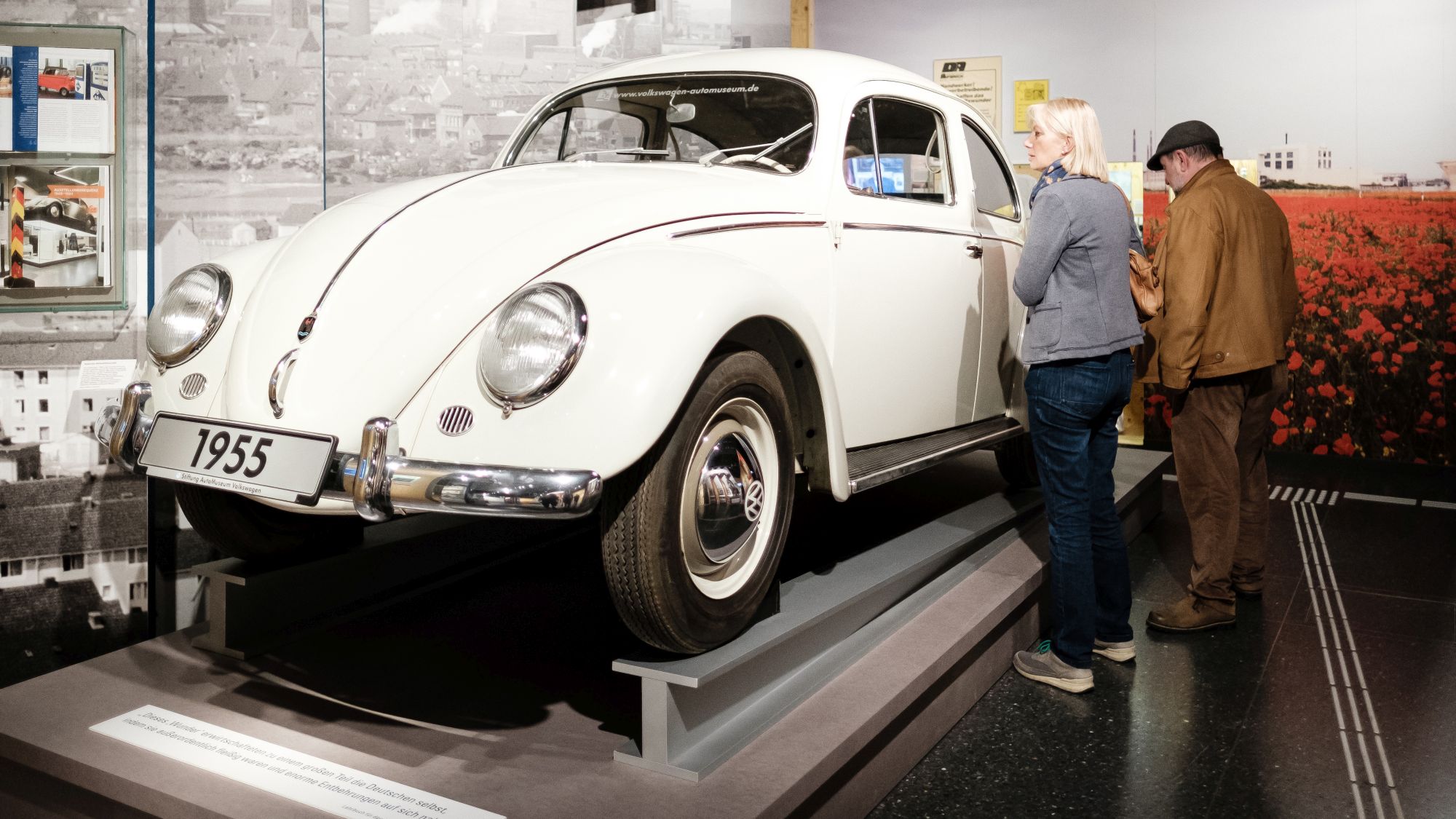
“Stunde Null”, “Economic Miracle”, “Antifascism” and “Miracle of Bern”. Myths compress the unwieldy past into meaningful stories. With 900 objects, our exhibition illustrates important German myths since World War II. It tells the story of their origins and spreading and asks about beginnings of a shared European identity.
Myths are a key element in a nation’s memory and are passed on from generation to generation. With mythic stories, nations support their identity. The Nazi regime misused national myths, so 1945 is a cut-off point for Germany. Older mythical narratives that are alive in other countries are virtually forgotten. Cherusci chief Arminius, “Germania’s liberator”, or Emperor Barbarossa are now at best just of historical interest. But what myths do we tell today and why?
The founding myths of West Germany tell of how hard work and clever policies fuel a miraculous recovery from wartime ruins. The myths prescribed in the GDR are different: this is to be a “workers’ and farmers’ state”, founded after “liberation” by the Soviet Union as a worthy “anti-fascist legacy”. Since 1990 Germans develop a new founding narrative. They are connected by the “German Revolution” and the German reunification.
In both West and East Germany, mythic self-images praise the clear distance to the Nazi regime and the Germans’ exemplary love of peace. Germany is proud of being a conservation pioneer – from saving forests to nuclear power phase out – and its major successes as a football nation. There are also attempts to create myths by politics, economy and media, e.g. the campaigns “Du bist Deutschland” (“You are Germany”) and “Wir sind Papst!” (“We are pope”). Europe has not yet developed any shared myths. At celebrations, politics and media highlight the idea of a European community of values or as a guarantor of peace but without big success.
Political myths are still a central element for nations in the 21st century. They can bring society closer together and help to integrate immigrants, because they teach parts of the national identity. A shared story can help against mythic constructions by political extremists. Are myths essential for social consensus?
